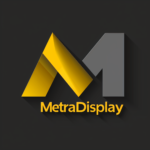
Stores that update their shop fitting design every 2-3 years keep 60% more regular customers compared to unchanged stores. This fact shows why store owners should make their retail spaces a top priority. Shop fitting goes beyond putting products on shelves. It creates a story that involves customers throughout their shopping journey.
Retail shop fit-outs need precise execution and close attention to detail to match what clients want. Visual elements shape how consumers behave, which makes shop fitting services a vital part of bringing in new customers. A good shop fit-out design adds special visual appeal that can reshape the scene of regular retail spaces into memorable shopping spots.
Store owners should know the multiple stages of shop fitting design before they start. The original concept and moodboard development costs between £3k-£8k, while detailed contract drawings range from £3.5k-£8k. This piece guides store owners through each step to create the perfect shop fitting design. The result is a retail space that looks great and helps boost sales and customer loyalty.
Understanding the Basics of Shop Fitting
What is shop fitting and why does it matter
Shop fitting is the complete process of planning, designing, and installing fixtures, fittings, and equipment in retail environments. This specialized trade turns empty commercial spaces into functional, appealing stores ready for daily operation. Shop fitting extends beyond simple furniture installation. It’s a complex discipline that combines technical design, logistics, contractor coordination, and deep insights into consumer behavior.
Shop fitting plays a crucial role in retail success. Visual elements significantly affect customer behavior, making shop fitting a leading factor in customer attraction. A well-executed shop fitting project improves the shopping experience, boosts operational efficiency, and builds brand image right from the customer’s first step inside.
Types of retail spaces that benefit from shop fitting
Shop fitting works effectively across retail environments, from small corner shops to large hypermarkets. These include:
- Fashion boutiques that need to stay current with trends
- Department stores with distinct yet unified sections
- Convenience stores that maximize limited space
- Supermarkets focused on customer flow and product visibility
- Specialty shops with custom fixtures and displays
Each retail space comes with unique requirements. Fashion shop design, to name just one example, needs current awareness of color and style trends to create appealing stores.
How shop fitting supports brand identity
Shop fitting brings a brand’s visual identity and values into physical space. Materials, product arrangement, customer flow pathways, and lighting choices in each area make this possible. Professional shop fitters blend brand colors, logos, and design elements into store layouts and fixtures. This creates cohesive shopping environments that strike a chord with target audiences.
Store interiors showcase brand identity through carefully selected colors, materials, layout, and fixtures. Custom shopfitting solutions help retailers tailor their store design to match their brand perfectly. Luxury brands often pick high-end materials and finishes, while casual brands typically choose relaxed, open layouts.
Planning Your Shop Fit Out Design

Good planning creates the foundation of successful retail environments. Your shop fitting design’s success depends on proper planning that balances visual appeal with functionality.
Conducting a site survey and space measurement
A detailed site survey documents your retail space‘s physical elements. Professional surveyors measure walls, entrances, windows, lighting, electrical systems, and structural components precisely. These measurements guide all future design decisions and help avoid expensive mistakes during construction.
Today’s retail surveys employ 3D scanning technology. This creates virtual walkthroughs where stakeholders can explore the space remotely from every angle. The technology helps solve problems faster and budget your shop fit-out design accurately.
Creating a concept and moodboard
The visual concept development starts after completing the measurements. Moodboards serve as powerful starting points by combining images, textures, typography, and color palettes. The best moodboards feature brand photos, logos, sketches, color swatches, and texture samples that capture your desired atmosphere.
Digital moodboards beat traditional physical boards. They make it easy to add videos, animations, and let teams collaborate remotely. Your moodboard should include images that showcase your brand’s personality and connect with target customers.
Preparing contract drawings and layout plans
Contract drawings turn your concept into exact technical specifications. Shop drawings are more specific than general construction plans. They take a closer look at individual components like fixtures, cabinetry, and displays. Architects, contractors, and fabricators use these drawings to communicate clearly and minimize construction errors.
Setting a realistic budget for your project
National in-line store fit-out costs average $155 per square foot, with regional prices ranging from $117 to $211. A detailed budget breakdown covering materials, labor, and furnishings becomes vital. Smart planners set aside 10-15% extra for unexpected costs.
JY Shop Fitting With 12+ years of experience in the shop fitting industry, we’ve mastered our craft. Our commercial shop fitters create stunning retail spaces that look amazing and work efficiently. We handle everything from clothing shop fittings to complete shop fittings for retail sectors of all types.
Choosing the Right Fixtures and Layout

The right fixtures and effective layout shape how customers experience your retail space. Research shows visual merchandising strategies can boost sales anywhere from 80% to 478%.
Essential fixtures every store needs
Retail spaces need certain basic fixtures, no matter their size or sector. Display cases protect and showcase merchandise while shelving systems present products in an organized way. Clothing retailers need mannequins to show outfit combinations. Mirrors help customers try products, and clothing stores must have full-height mirrors next to fitting rooms. The checkout counter plays a significant role – it handles final transactions and creates opportunities for impulse purchases.
Optimizing layout for customer flow
Customer movement patterns hold the key to maximizing sales. Most shoppers turn right when they enter (called “the invariant right”) and move counterclockwise through stores. The first 5-15 feet of your entrance serves as a “decompression zone” where customers adjust – this isn’t the place for key merchandise. Your best-selling products should sit in the middle or back, making customers walk past other items.
Incorporating lighting, signage, and display units
Lighting shapes customer perception significantly. About 76% of American consumers walk into unfamiliar stores just because of attractive signage. A mix of ambient, task, and accent lighting creates welcoming atmospheres and highlights key areas. Clear signs help customers navigate your space, while backlit displays grab attention, especially during evening hours or in darker spots.
Using electronic shelf labels and smart POS systems
Electronic shelf labels (ESLs) show us retail displays’ future by allowing centralized price updates and cutting labor costs. Studies reveal 70% of customers say digital signage affects their buying decisions. ESLs make dynamic pricing and instant updates possible, and they can light up to help staff find items quickly during restocking or online order fulfillment.
Storage and backroom planning
Our fitting shop knows each retail fit-out project is unique. We team up with you to understand your needs and priorities. Our shop fittings specialists turn your vision and drawings into functional, attractive products that boost your store’s atmosphere and customer experience.
A well-organized backroom makes front-of-house operations smooth. Your stockroom shelving should mirror the store layout for quick restocking. Tall shelving units maximize vertical space, and mobile shelving can be compacted when not needed. The backroom needs proper climate control and lighting for staff productivity and inventory protection, even though customers never see it.
Advanced Considerations for a Perfect Fit Out

Creating exceptional retail environments goes beyond simple layout and fixtures. Your store needs advanced elements that enhance customer experience. These sophisticated features turn ordinary spaces into remarkable destinations that boost sales and create lasting customer relationships.
Integrating technology into your shop fitting design
Digital innovation has altered retail shop fitting dramatically. Smart shelving technology enables immediate inventory tracking, which helps store owners optimize shelf space and reduce manual counting. Interactive display screens give customers detailed product information while showcasing promotional content tailored to their interests. Modern POS systems and contactless terminals make checkout processes smoother, and businesses can monitor inventory and cash flow instantly.
Ensuring accessibility and inclusivity
Over 60 million adults (26% of the population) in the US live with a disability. Accessible design includes split-height counters for wheelchair users and people of short stature. The space needs accessible fitting rooms with grab bars and lower hooks, along with clear signage that has strong color contrast and braille options. Automatic doors and wide aisles help all customers move through your space with ease.
Selecting durable and sustainable materials
Retail spaces with heavy traffic need materials that can withstand constant use without showing wear. Quality materials like reinforced wood, steel, or composite materials make the best choice. Eco-conscious retailers can choose FSC-certified wood, fast-growing bamboo, recycled metals, and low-VOC finishes. These eco-friendly options last longer and improve ROI while reducing environmental impact.
Working with professional shop fitting services
Shop fit-outs need expertise to balance aesthetics with functionality. Our team serves as your trusted shopfitting suppliers and shows the value professional shop fitting brings to your retail environment. We create captivating retail spaces that leave lasting impressions on your customers. Professional shopfitters ensure your store design matches your merchandise and target customers perfectly. The result is a unique, innovative sales environment that sparks buying incentives through multisensory experiences.
Conclusion
A perfect shop fitting design needs strategic planning and careful execution. Stores that update their environments every 2-3 years keep 60% more recurring customers than those that don’t change. Smart retail space design substantially boosts customer retention.
Successful shop fitting projects start with detailed site surveys and exact measurements. Concept development and contract drawings turn vision into reality. Setting realistic budgets helps avoid getting pricey surprises later. These basic steps ensure the space looks good and works well.
Fixture selection and layout optimization directly affect a customer’s experience. Display cases, shelving systems, lighting, and signage guide shoppers through carefully planned pathways. Electronic shelf labels and smart POS systems are modern additions that streamline operations and boost customer involvement.
Smart design choices turn ordinary retail spaces into exceptional shopping destinations. Technology integration, accessibility features, and eco-friendly materials create unique environments that strike a chord with today’s consumers. Professional shop fitters help store owners maximize their return on investment.
Shop fitting goes beyond arranging furniture—it’s a detailed strategy to translate brand identity into physical space. Store owners who focus on their retail environments create compelling stories that involve customers throughout their shopping experience. This investment delivers real results through better sales, stronger brand recognition, and lasting customer loyalty.
FAQs
Q1. What are the key elements of an effective shop fitting design? An effective shop fitting design includes proper space planning, strategic fixture selection, optimal customer flow layout, appropriate lighting and signage, and integration of technology. It should also consider brand identity, accessibility, and the use of durable materials.
Q2. How often should a retail store update its shop fitting design? Retail stores should consider updating their shop fitting design every 2-3 years. Stores that refresh their environments this frequently tend to retain 60% more recurring customers compared to those with static designs.
Q3. What role does technology play in modern shop fitting? Technology plays a crucial role in modern shop fitting. It includes elements like smart shelving for real-time inventory tracking, interactive display screens for product information, electronic shelf labels for dynamic pricing, and advanced POS systems for streamlined checkout processes.
Q4. How can store owners ensure their shop fitting design is accessible and inclusive? To ensure accessibility and inclusivity, store owners should incorporate features such as split-height counters, accessible fitting rooms with grab bars, clear signage with strong color contrast and braille options, automatic doors, and wide aisles. These elements help accommodate customers with various disabilities.
Q5. What are the benefits of working with professional shop fitting services? Professional shop fitting services bring expertise in balancing esthetics with functionality. They can tailor store designs specifically to your merchandise and target customers, create unique and innovative sales environments, and ensure that the space triggers buying incentives through multisensory experiences. This expertise can lead to improved customer engagement and increased sales.

